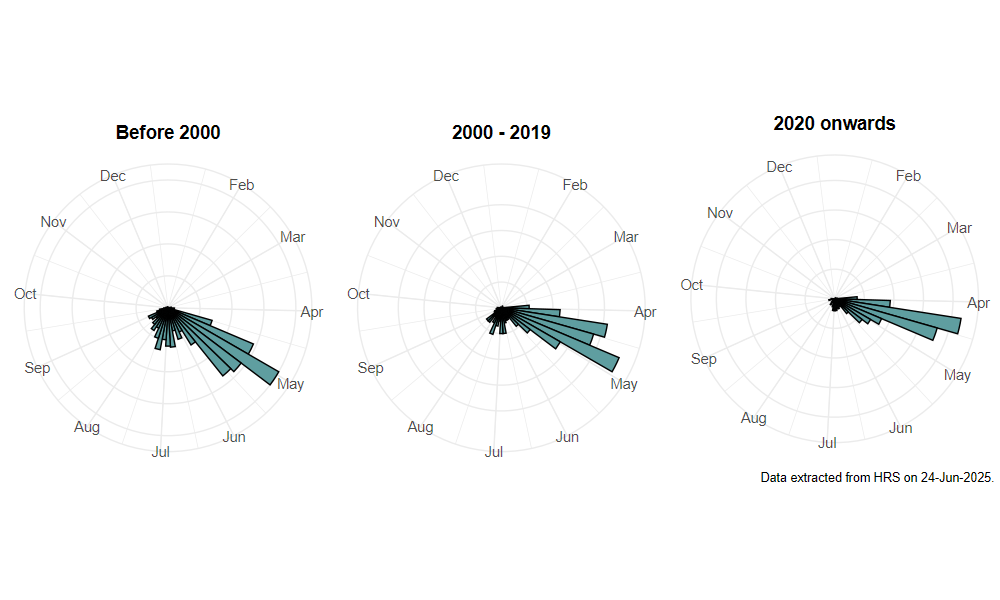Melangyna cincta (Fallén, 1817)
Identification
Identification difficulty = 3. ![]()
![]() according to Ball & Morris, 20241
according to Ball & Morris, 20241
Synonymy
Syrphus cinctus Fallén in Coe(1953)2. Melangyna cincta (Fallén) in Stubbs & Falk (1983)3. Fagisyrphus cinctus in Bot & van de Meutter (2023)4.
Biology
The larva is aphidophagous, appearing to favour Phyllaphis fagi on Beech Fagus sylvatica, but with records from aphids on Oak Quercus, Sycamore Acer pseudoplatanus and Lime Tilia sp. which are reinforced by the widespread distribution of records in areas not noted for their Beech woods. This is a species is typically found in glades, rides and edges, but can also occur around scrub and mature hedges. Adults are usually seen visiting flowers and are especially fond of white umbels along wooded tracksides. Males hover at some height over tracks and clearings in woodland.
Flight period
The following plots show the number of unique records per week excluding those reported to be of immature stages.

Distribution
Most records lie south of a line between the Solway and Humber Estuaries but there are scattered records to Sutherland.

Trends
The following plots show the Frescalo TFactor vs year and a map of the rescaled frequency (all records) for the species.
-
Ball, S., & Morris, R. (2024). Hoverflies of Britain and Ireland. WILDGuides (3rd ed.). Oxford: Princeton University Press. ↩
-
Coe, R. (1953). Diptera: Syrphidae. Handbooks for the Identification of British Insects, 10(1), 1–98. ↩
-
Stubbs, A., & Falk, S. (1983). British Hoverflies: An Illustrated Identification Guide (1st ed.). Reading: BENHS. ↩
-
Bot, S., & van de Meutter, F. (2023). Hoverflies of Britain and North-Western Eupope. Bloomsbury Wildlife. London: Bloomsbury Publishing. ↩